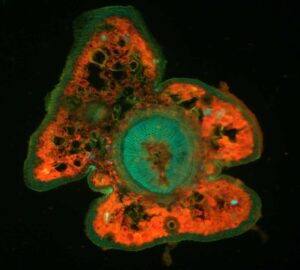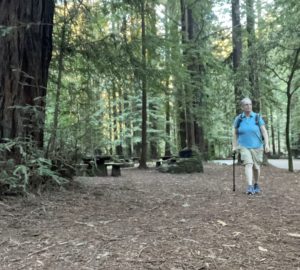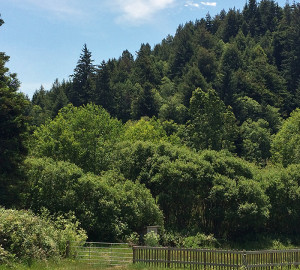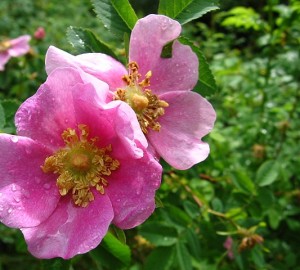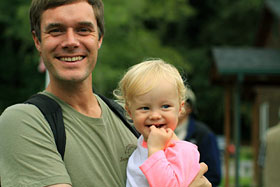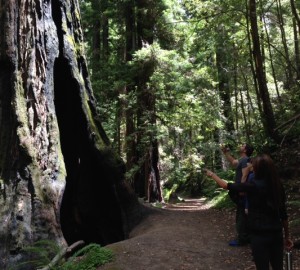
If you’ve stood in the redwoods near dusk, no doubt you glimpsed bats darting above you. I love to see them, especially when I’m camping, because I know they are hunting pesky mosquitoes.
A new research study by Jean-Paul Kennedy, Stephen Sillett, and Joseph Szewczak from Humboldt State University shows that bats roam the whole redwood forest, from the ground to the treetop. In fact, Kennedy and colleagues found that lots of bat activity happens hundreds of feet above the ground at the top of the coast redwood canopy. This discovery was made possible by deploying acoustic measuring systems along the height of redwoods to detect where bats were flying most. They also discovered two species of bat not previously known to live among the redwoods, Lasiurus blossevillii and Tadarida brasiliensis.
Some bat species transit through the forest seasonally, while other are present all year long. They use cracks in the redwood bark or cavities formed by forest fires in the trunks for shelter. Next time you’re in the forest, peek into a basal hallow carved out by fire and look up for signs of bats resting in the shadows.
For a close-up look at how scientists study bats among the redwoods, read my post Bats of Humboldt Redwoods.
Reference:
Kennedy, J. P., S. C. Sillett, and J. M. Szewczak. 2014. Bat activity across the vertical gradient of an old-growth Sequoia sempervirens forest. Acta Chiropterologica, 16(1): 53-63.

